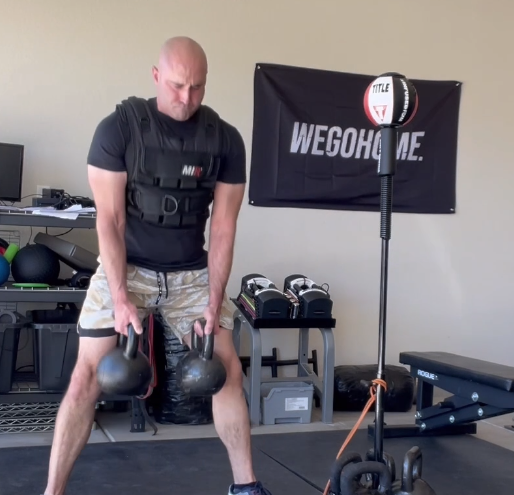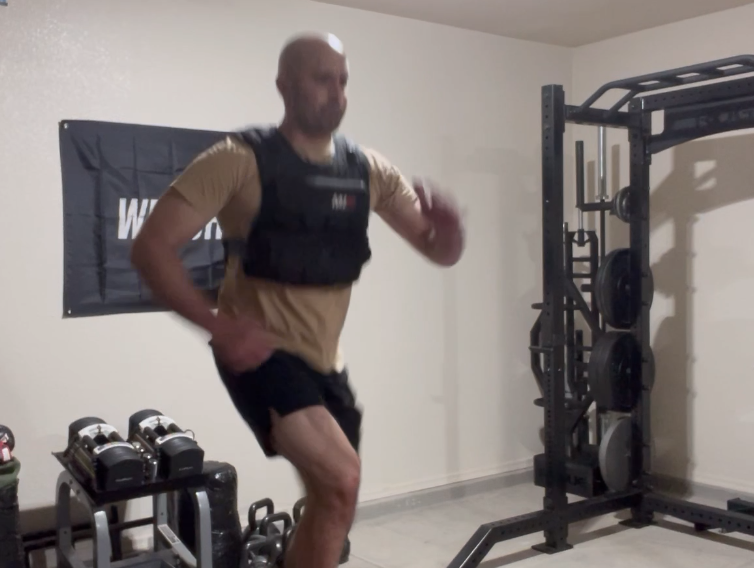And we provide a couple alternatives.
Key Takeaway
The Olympic lifts (snatch, clean and jerk) and their variations are phenomenal tools for developing power in the weight room. Over the years these movements have also been used in high repetition circuits in various fitness systems/fads. Although sessions like this can be a challenging and make you feel tired/accomplished, as the reps climb, form inevitably suffers, and we just set ourselves up for injury. As HYROX events seem to be turning into the current fitness trend, this practice seems to be falling out of favor a bit, but I still see it practiced quite often in many crossfit-style gyms.
For tactical/first responder populations there are better options for superior long term progression that can be just as challenging and with less risk. This is particularly important for our older cohorts still in uniform as they grew up when crossfit and similar activities was “the thing” at the time and that is all they know. Using mixed modality conditioning can be a great middle ground for conditioning sessions the this. The key is choosing movements that can be completed under fatigue that are simple, total body, and we also train at the proper intensities to accomplish our goals.
Mixed Modality Conditioning- How do we build a session?
Start with picking something cyclic- Bike, Versaclimber, incline walks, sled pushes/pulls (longer distances), stairclimber, etc...then combine with a few of the fundamental Human movements.
Example:
Rogue Echo Bike- Anywhere from 2-5 Minutes at a moderate Pace
KB Swings- 5-15 Reps
Goblet Squats 5-15 Reps
Push Ups- 5-15 Reps
Sled Push/Pull – 2-5 Minutes or complete for a distance
Repeat for 3-5 Rounds
The beauty of this set up is all of these movements are relatively “safe” or easy to perform as you fatigue. If you were to add in a set of 20 hang cleans there is a high likelihood reps 10-20 will not be pretty, nor would you be generating much bar speed or power- the actual reason you should be doing Olympic lifts if you choose to use them in your programming.
Another benefit of this session is you can manipulate the reps/time/rest periods in multiple ways to target various training goals.
Mixed Modality Session- Energy System Focused
Aerobic (Zone 2/Capacity)
If you wore a heart monitor and kept your heart rate with in about 115-150 bpm, you could use the session above to train zone 2/aerobic capacity. This can be accomplished by manipulating the reps completed, how they are done (max speed or more rhythmic), and the intensity of the cyclic movement.
You could also keep the reps lower and move from implement to implement while keeping your heart rate in that zone, or you could do higher reps but avoid going for max power on each movement. Just keep rhythmically working through the session while you slow down and speed up to keep yourself in the chosen intensity. Sessions like this will improve your recovery time between intense bouts of activity, recovery between sessions, and also improve your heart health.
HICT
You could also train at the high end of that zone while maintaining your power output in each of the movements and complete a form of High Intensity continuous training (HICT). This trains the ability to maintain power over longer periods of time. This is great for sets of 5-10 minutes for a few weeks, and then later up to multiple sets of 20 minutes. Keep the reps on the lower end (1-5) and they should be moved with some power. You could then push or pull a sled while keeping your heart rate around 150bpm as part of the circuit or as a dedicated longer set at the end.
Anaerobic Threshold
You could also power through this session at pace that keeps your heart rate around 160-170bpm, as for most that would train your anaerobic threshold, pushing you to the edge of your aerobic capacity. If you hang out right at that zone for sets ranging from about 1 minute to as long as 10 minutes, you’ll increase your ability stay aerobic at higher intensities. This is important as this will allow you to stay aerobic for longer periods of time while you push harder. We used this exact concept with different movements during out HERO cycle:
Closing
The reality is most people do not need or should be doing high rep Olympic lifting for conditioning. The injury rates speak for themselves. If you’re a professional...a member of the tactical/first responder population...you need sensible strength and conditioning programming to support your performance on the street or battlefield.
There is a reason high rep Olympic lifting has never made it into real sports preparation circles. In high level athletics the strength coach is responsible not just for the athlete’s performance, but also their injury rates. If an athlete gets injured in the weight room, and the coach’s reason for the injury was on rep 18 of a set of hang cleans the athlete tweaked his back that coach will be looking for another job. Especially if the coach cites mental toughness as part of the reason for them doing the activity.
You can still get after mental toughness and add stress to training. Just be sensible with your modality choices and you’ll not only get a challenging workout, you’ll also be able to do it over a 20 year+ career.



